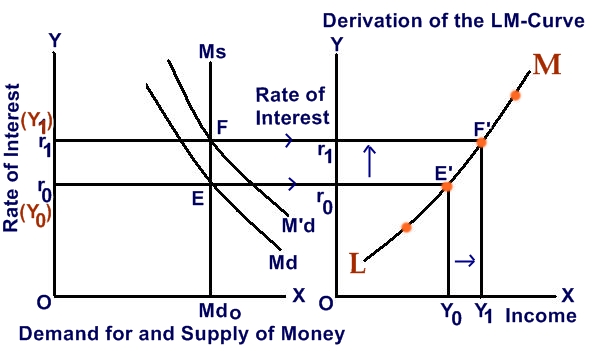Published by: Dikshya
Published date: 05 Jul 2023

To derive the LM curve, we start with the equilibrium condition in the money market, which states that the demand for money equals the supply of money. Mathematically, this can be expressed as:
M/P = L(r, Y)
where M represents the supply of money, P represents the price level, L(r, Y) represents the demand for money, r represents the interest rate, and Y represents the level of output.
Next, we need to determine how changes in the interest rate and output affect the demand for money. Generally, the demand for money is positively related to the level of output (Y) and negatively related to the interest rate (r).
We can express the demand for money function as follows:
L(r, Y) = kY - hr
where k is the sensitivity of the demand for money to changes in output (Y), and h is the sensitivity of the demand for money to changes in the interest rate (r).
Substituting this demand for money function into the equilibrium condition in the money market, we have:
M/P = kY - hr
Now, let's solve for the interest rate (r) in terms of output (Y):
r = (kY - M/P) / h
This equation represents the relationship between the interest rate (r) and output (Y) that ensures equilibrium in the money market.
To plot the LM curve, we can fix the supply of money (M/P) and the parameters k and h. Then, for different levels of output (Y), we can calculate the corresponding interest rates (r) using the equation above. Plotting these combinations of output and interest rate will give us the upward-sloping LM curve.
It's important to note that changes in the money supply (M) or shifts in the demand for money (L(r, Y)) will cause the LM curve to shift. An increase in the money supply or a decrease in the demand for money will shift the LM curve to the right, indicating lower interest rates for a given level of output. Conversely, a decrease in the money supply or an increase in the demand for money will shift the LM curve to the left, indicating higher interest rates for a given level of output.